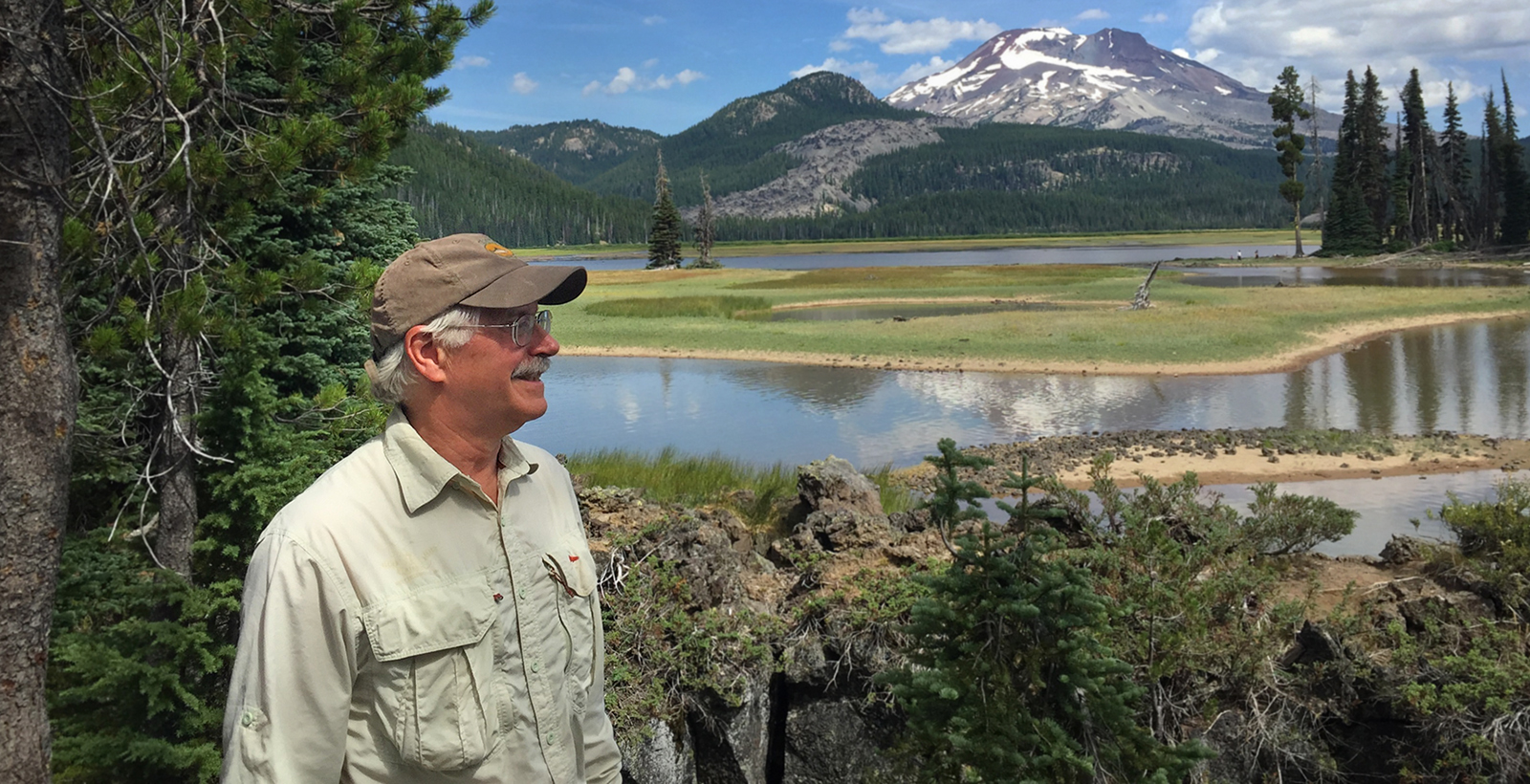A NorCal USFWS Biologist Reflects As Retirement Beckons

The following is courtesy of the U.S. Fish and Wildlife Service’s Pacific Southwest Region:
John Hamilton was nervous as he waited to speak at a recent meeting of the Klamath Falls Trout Unlimited.
As a career biologist for the U.S Fish and Wildlife Service, he was concerned his topic might be controversial, as discussions about Klamath River fish, mines, dams, logging and other human disturbance could lead to strong opinions and heated debate.

Hamilton knew this subject well, and in the end, his nerves quickly turned to confidence as he skillfully described a time long ago when great numbers of salmon and steelhead spawned in the upper Klamath River, and how those historic runs could return.

For the past 15 years, Hamilton has been the hydropower branch chief for the Yreka Fish and Wildlife Office, responsible for of researching migratory fish distributions and writing science-based recommendations to provide safe, effective and timely fish passage spanning an area that includes four lower Klamath River dams.
Along the way, he has experienced his share of setbacks as well as milestones. “The conflicting interests in the Klamath created a lot of challenges in dam licensing and reviews,” he said.
Now, after a successful career spanning 38 years, he reached a personal milestone – retirement.
Hamilton knew early on he was well suited for regulatory biology, as he enjoyed the detail work, reading fisheries and hydrology publications, assimilating facts and analyzing the main points into reports used to make large-scale decisions.
Hamilton’s career choice became clear while attending Michigan State University. He saw a salmon life cycle and habitat diagram, and wondered “how do scientists discover this fascinating stuff, and what did this mean for salmon restoration?”
“I had to learn more. I wanted to know as much as possible about fish life histories and habitat,” he said.”I was extremely lucky to attend Michigan State and have outstanding mentors to guide me.”

After graduating with his Bachelor of Science degree in Fisheries biology, Hamilton joined the Peace Corps, serving in the Philippines and teaching locals the basics of fish farming.
Upon returning to the United States, he landed his first permanent job with the U.S. Fish and Wildlife Service at the Great Lakes Fishery Laboratory in Ann Arbor, Michigan.
Eventually, Hamilton completed a Master of Science degree in Natural Resource Management at Humboldt State University. After jobs in Alaska and Michigan, the issues of salmon and dams lured him to the Klamath Basin. His career appeared to have a recurring theme of fish and hydropower projects.
“It took a while to figure out, but once I did, my career fell into place and I was able to advance fairly quickly,” he said.
One of Hamilton’s career highlights came in 2005, as part of the Department of Interior team that appeared before an administrative law judge to defend Klamath River fish passage recommendations. Hamilton said the process was much like a regular jury trial, but without the jury. “I spent about four hours on the witness stand being grilled by high-level power company attorneys about my research. It was pretty intense,” he said.
In the end, the judge ruled in favor of the fish. The power companies settled, and Hamilton’s work on salmon habitat requirements is part of a proposal to decommission and remove the lower four Klamath River dams beginning in 2020.

“I consider that as my finest hour,” he said. “You can achieve a great deal in complicated situations with perseverance and bulletproof science.”
Nadine Kanim, a co-worker of Hamilton’s, agrees about his tenacity.
“John always seemed like he was pushing upstream for this project, like the salmon he was trying to help,” she said. “There were a lot of powerful people who didn’t want to believe or listen to his science.”
Kanim said that besides missing Hamilton’s quick wit and sense of humor, his retirement leaves a large, hard-to-fill void. “No one has contributed more to the recovery of salmon and steelhead in the Klamath Basin than John.”
Hamilton’s research uncovered accounts from the late 19th century of thousands of salmon in the Klamath River, and how those runs rapidly disappeared due to human progress. At one time, Klamath River salmon migrations were the third-largest on the West Coast.
Now, over 100 years later, Hamilton’s work could play a key role in the return of anadromous fish to hundreds of miles of habitat, benefitting the commercial, sport and tribal fishery.

Bob Carey, a supervisory fish and wildlife biologist in the Yreka office said of Hamilton’s efforts: “John saw the value of his work to the resource, and made great strides at modernizing our thoughts on the Klamath River system. He was extremely passionate about his work.”
Throughout his career, Hamilton was able to perfect another of his passions – fishing. “I’ve been fishing since I was a kid. It actually helped me decide early on what I wanted to do for a career,” he said.
For the past several years he has mentored local underprivileged youth, teaching them the art of fly tying and casting. Now Hamilton figures he has about six months’ worth of his own fishing to do after retiring.
As he packs his office into well-organized boxes, he looks forward most to his first summer off in 51 years, training his hunting dog and spending time with his daughters Katey and Molly and his wife Lauri.
“I have been truly blessed to do this work for so long, it was my heart and passion,” he said. “Retiring was a hard decision, but I’m hopeful that salmon and steelhead will return to the upper Klamath River in my lifetime.”
John Hamilton will likely be one of the first to welcome them home.

Susan Sawyer is the U.S. Fish and Wildlife Service’s public affairs specialist for the Klamath Basin.



